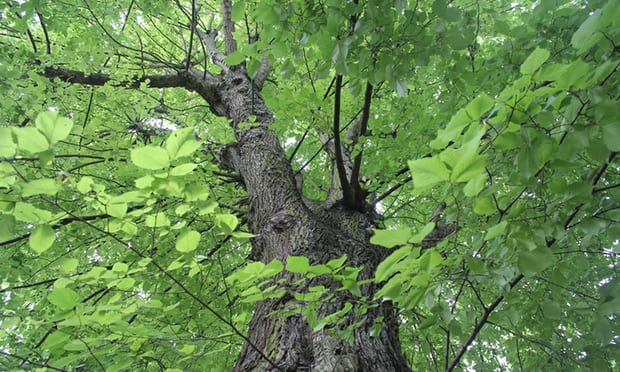 |
| Reviews and Templates for Expression We |
Put a price on urban trees – and halt this chainsaw massacre
From chestnuts in south London to elms in Sheffield, they improve mental health, and stem pollution and floods. Yet policymakers fail to see them as assets.

‘This month marks the beginning of the end for Sheffield’s Chelsea Road
elm, a rare surviving English elm with a colony of equally rare
white-letter hairstreak butterflies.’ Photograph: Matt Larsen-Daw/The
Woodland Trust
In Sheffield, despite vociferous opposition from local residents and high-profile people such as Jarvis Cocker to Michael Gove, the final tranche of thousands of mature street trees are being removed. This month in the city marks the beginning of the end for the Chelsea Road elm, a rare surviving English elm on which lives a colony of equally rare white-letter hairstreak butterflies.
The councils overseeing these chainsaw massacres are different politically. But they share a tragic inability to see street trees as an asset rather than a liability. They’re also ignominiously failing to use new tools at their disposal to calculate the real value of their trees.
In Wandsworth, a wealthy Conservative council is lavishing £45,000 of Heritage Lottery cash earmarked for rejuvenating Tooting Common on replacing the chestnuts with young lime trees. Its justification is health and safety after one tree suddenly fell down last winter. An independent expert report for the council suggested it might consider replacing the whole avenue.
When residents objected to substituting their grand old trees with a sleek avenue of cheap-to-maintain young trees, the council conducted a consultation: 9,000 letters went out, and most of the 700 respondents picked the rather skewed “choice” of a new avenue over occasionally tatty-looking old trees. More than 5,000 mostly local people have since signed a petition to save Chestnut Avenue.
Residents commissioned another expert report by an independent tree consultant. Jeremy Barrell is no tree-hugger and is routinely employed by councils to assess and remove trees. Barrell warns Wandsworth that planting an avenue of one species is a recipe for disaster in an era of fast-moving globalised tree diseases. We need a mix of trees. He concludes the most cost-effective option would be to retain the avenue, trim the older trees, remove a couple, and replant with other species. He’s so confident that the chestnuts can be made safe that he’s offered the council free coverage under his own professional insurance.
Barrell also performed a calculation developed by arboralists called Cavat. Just as a building surveyor can calculate the value of a house, so a tree officer can calculate the asset value of a tree – how much it costs to replace it. This reveals a useful truth: not all trees are equal, and big street trees are far more valuable than small trees.
Chestnut Avenue is currently worth £2.6m, according to this method. The young trees that will replace it are estimated at £50,000-£100,000. Spending £45,000 to destroy a multimillion-pound community asset doesn’t stack up. In Sheffield’s long-running tree saga, independent professionals calculated that trees worth £66m have been cut down in the past five years.
The ruination of this community asset is being orchestrated by a cash-strapped Labour council that sought salvation in a PFI contract with the infrastructure company Amey to rebuild its roads. Big trees are replaced by saplings, which are cheaper to maintain over 25 years of the contract but possess few of large trees’ beneficial effects – for example on flood alleviation and pollution. The devil is in the opaque interpretation of the much-redacted PFI contract. This contract only permits a fairly limited range of engineering solutions for unruly trees, but campaigners have calculated that nearly 50% of the trees earmarked for destruction could be saved using solutions listed in the contract at no extra cost to the council.
The puzzle in Sheffield has long been why the council has not used its power to save special trees, such as the Chelsea Road elm. But residents believe they finally got their answer when councillors revealed that if they “saved” any tree they – and not Amey – would then become liable for subsequent maintenance. When the council signed this disastrous PFI contract, it put a gun to its own head. Sheffield’s trees have been privatised for 25 years. And the contract firmly enshrines them as liabilities.
It needn’t be like this. Future contracts could include a recognition of street tree values using Cavat, or more sophisticated American software called i-Tree. The latter calculates the annual value of each street tree in terms of certain ecosystem services: flood alleviation, cooling, pollutant removal and carbon sequestration. According to i-Tree, London’s trees provide £133m of benefits each year.
Some environmentalists view such “ecosystem service” arguments as the great hope for saving a planet ruled by accountants. Others fear that such calculations are reductive, and underestimate “natural assets” – i-Tree valuations do not include less easily calculable tree benefits, such as the improved mental health of local people, or ecological diversity. Ultimately, nature will always be the loser in any cost-benefit crunch.
Nevertheless, giving trees a price looks like a good, pragmatic way to retain them in urban environments. What the streets of Wandsworth and Sheffield show us is that policymakers cannot be relied upon to recognise these precious assets. The only solution is for local communities to teach them.
|
|
|
|
Copyright remains with the original authors |